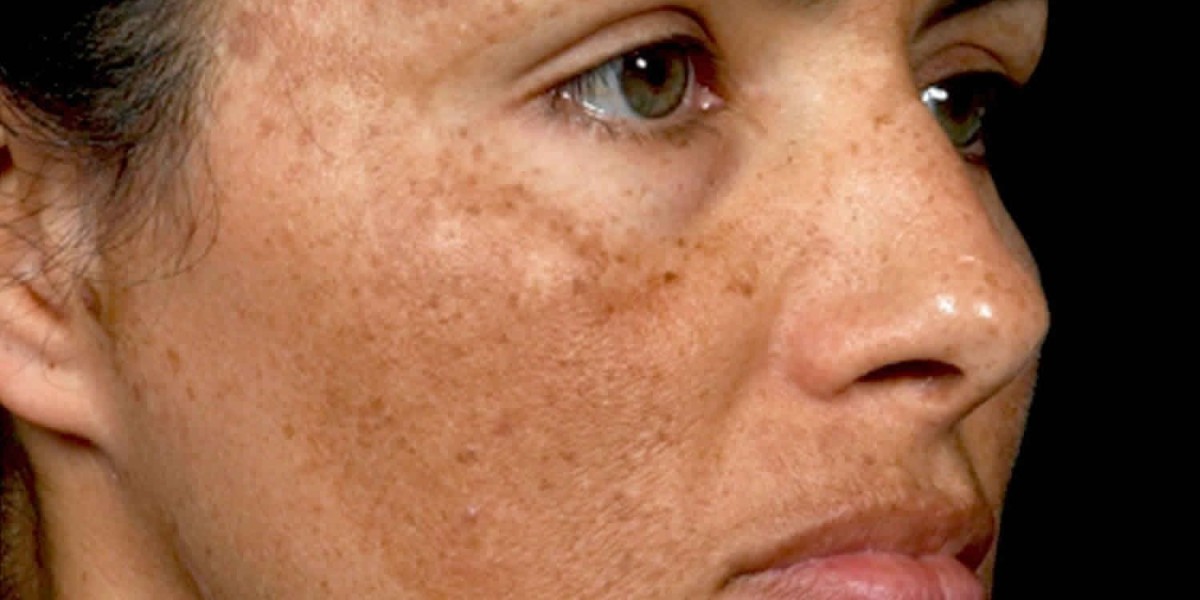Hyperpigmentation is a common skin concern characterized by dark patches or spots caused by an overproduction of melanin. It can be triggered by sun exposure, acne, hormonal changes, or inflammation. One of the most effective ways to manage and prevent worsening of hyperpigmentation is through the consistent use of sunscreen. Whether you're undergoing a professional procedure or using topical treatments, sun protection is non-negotiable. For those seeking medical solutions, you can explore effective options for managing this condition through this resource on Hyperpigmentation Treatment in Islamabad.
Lets delve into which type of sunscreen is best suited for managing hyperpigmentation effectively.
Why Sunscreen Matters for Hyperpigmentation
Hyperpigmentation tends to darken with prolonged sun exposure due to increased melanin activity. Even on cloudy days or during short exposure, UV rays can aggravate existing spots or create new ones. Sunscreen works as a barrier to block or absorb these harmful rays, reducing further skin damage and allowing your skin tone to even out over time.
Types of Sunscreen: Chemical vs. Physical
Sunscreens are broadly categorized into two types: chemical and physical (also known as mineral).
Chemical Sunscreens
These contain ingredients like avobenzone, oxybenzone, and octinoxate. They work by absorbing UV rays and converting them into heat, which is then released from the skin. Chemical sunscreens tend to be more lightweight and easier to apply without leaving a white cast.
However, for people with sensitive or hyperpigmented skin, some chemical ingredients can cause irritation or allergic reactions, potentially worsening pigmentation in the long run.
Physical Sunscreens
These include zinc oxide and titanium dioxide, which sit on top of the skin and reflect UV rays. They are less likely to irritate sensitive skin and are often recommended by dermatologists for people with skin conditions like melasma or post-inflammatory hyperpigmentation.
Physical sunscreens offer broad-spectrum protection and start working immediately after application. While they may leave a slight white residue, newer formulations are more cosmetically elegant.
The Best Sunscreen for Hyperpigmentation
When choosing a sunscreen specifically for hyperpigmentation, consider the following factors:
Broad-Spectrum Protection
Always opt for a sunscreen labeled broad-spectrum, which means it protects against both UVA (aging) and UVB (burning) rays. UVA rays penetrate deeper and are the main culprits in worsening pigmentation disorders.
SPF 30 or Higher
For effective protection, an SPF of 30 or more is recommended. Higher SPF levels offer increased protection, especially for individuals with active pigmentation issues or undergoing skin treatments.
Non-Comedogenic and Fragrance-Free
Look for sunscreens that are non-comedogenic (wont clog pores) and free from artificial fragrances and dyes, which can cause irritation and worsen dark spots.
Tinted Formulas
Tinted sunscreens often contain iron oxides, which provide additional protection against visible light a factor increasingly recognized in contributing to hyperpigmentation, especially in deeper skin tones. These formulations can also help in color-correcting existing discoloration.
Ingredients to Look For
In addition to UV filters, many sunscreens are now formulated with skin-brightening ingredients such as:
Niacinamide: Known for its anti-inflammatory properties and ability to reduce melanin transfer.
Vitamin C: A potent antioxidant that helps lighten existing dark spots.
Licorice Root Extract: Helps to calm the skin and lighten hyperpigmentation.
These added benefits make such sunscreens a dual-action solution: protecting your skin while helping to treat discoloration.
How to Use Sunscreen Properly
To reap the full benefits, apply sunscreen generously 15 minutes before sun exposure and reapply every two hours, especially if sweating or swimming. Dont forget areas like the neck, ears, and hands.
Make sunscreen a daily habit even indoors as UVA rays can penetrate through windows and artificial lighting.
Conclusion
When it comes to preventing and managing hyperpigmentation, the right sunscreen plays a vital role. A physical, broad-spectrum sunscreen with SPF 30+ and skin-soothing ingredients is often the best choice for those battling dark spots and uneven skin tone. For individuals dealing with stubborn pigmentation, a comprehensive skincare plan combined with medical treatments can offer more dramatic improvements.
To take your skin health to the next level, consider consulting professionals at Royal Cosmetic for personalized guidance and advanced care.








